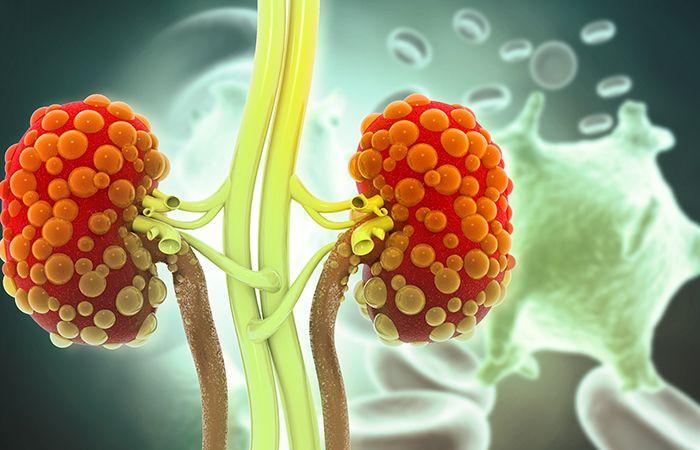Pathophysiology of ERC: multiple ways towards insufficiency
ERC is defined by the progressive and irreversible decrease in renal function, expressed by a glomerular filtration rate (TFG) <60 ml>
Main causes
The main etiologies of ERC in Spain are type 2 diabetes mellitus and arterial hypertension, responsible for more than 60 percent of cases. They are followed by glomerular diseases, hereditary nephropathies (such as autosomal dominant renal polycytosis) and obstructive nephropathies, particularly in elderly patients with prostate pathology. It is worth noting the upward trend of diabetic nephropathy, linked to the increase in obesity, sedentary lifestyle and population aging. The load of renal disease secondary to diabetes not only implies greater income in dialysis programs, but a parallel increase in cardiovascular risk and sudden death.
Risk and Evolution Factors
The progression of the ERC is modulated by a combination of non -modifiable factors (age, sex, genetic load) and modifiable, such as poorly controlled hypertension, glycemic mismanagement, proteinuria and smoking. A relevant finding is the proportional relationship between accumulated cardiovascular risk factors and ERC prevalence: 4.5 percent in people with 0-1 factors, up to more than 50 percent in those who accumulate between 8 and 10. This reinforces the need for a multidisciplinary and preventive approach.
Management Strategies: Intervention prevention
The management of the ERC must contemplate an integral, individualized and dynamic approach, with three primary objectives: slow down the progression of the disease, prevent or treat associated complications, and improve the patient’s quality of life.
Changes in lifestyle
The European guides and the Spanish Society of Nephrology (SEN) recommend:
– Sodium restriction diet (<2 g>
– At least 150 per week of moderate physical activity.
– Cessation of smoking.
– Body weight control.
Pharmacological treatment
The treatment must adapt to the stadium and comorbidities:
– Hypertension: IECA or ARA-II as the first line. Objective: PA <130>
– Diabetes: ISGLT2 such as Dapagliflozine or Pagliflozine have demonstrated renal and cardiovascular benefits.
– Dyslipidemia: Statins in stages 3-4, with solid evidence of cardiovascular risk reduction.
– Anemia: Stimulating agents of erythropoiesis and iron.
– Bone/mineral alterations: Phosphorus chelants, active vitamin D, cinacalcet in hyperparathyroidism.
Clinical monitoring and monitoring
The periodicity depends on the stadium:
– Stages 1-2: semiannual controls.
– Stages 3-4: quarterly controls.
– Estadio 5: Monthly monitoring.
– Key parameters: TFG, albuminuria, PA, glycemia, lipids, calcium, phosphorus, pth, HB, bicarbonate, potassium.
Complications associated with ERC: beyond the kidney
ERC entails a broad spectrum of complications:
– Cardiovascular: Accelerated atherosclerosis, ventricular dysfunction, arrhythmias.
– Anemia renal: Frequent in stages 3-5, contributes to fatigue and functional deterioration.
– Bone and mineral disorders (CKD-MBD): fractures, vascular calcifications.
– HyperPotaSemia: Risk increased with IECA/ARA-II and ISGLT2.
– Metabolic acids: It favors sarcopenia, progression of ERC and osteoporosis.
Technology and innovation in nephrological care
Digitization and artificial intelligence (AI) have begun to transform ERC management:
– Ia in prediction of progression: improves risk stratification.
– Telemedicine: It allows continuous monitoring in rural areas or with high welfare load.
– Mobile apps: enhance patient self -care.
Public Health and Health Education Strategies
To impact the prevalence and progression of the ERC, it is required:
– Active screening in risk groups (diabetics, hypertensive,> 60 years).
– Community health education.
– Continuous training of primary care staff.
– Integrated multidisciplinary care models.
Conclusion
Chronic kidney disease is an entity of great clinical relevance, with implications that transcend the kidney. Its approach requires preventive strategies, protocol monitoring and a multidisciplinary approach. The current evidence supports that with adequate interventions, both pharmacological and behavioral, it is possible to slow down its progression and reduce its systemic impact. The collaboration between healthcare levels, technological innovation and greater social awareness will be decisive to reverse their growing tendency.
References
- Spanish Society of Nephrology. Consensus document for the management of chronic renal disease in primary care. Nephrology 2022; 42 (1): 1-15.
- KDIGO Clinical Practice Guideline for the Evaluation and Management of Chronic Kidney Disease. Kidney Int Suppl. 2012;3(1):1-150.
- García Pérez L, Vega A, López-Gómez JM. Epidemiology of chronic kidney disease in Spain and in Europe. Nephrology 2019; 39 (4): 337-45.
- Heerspink HJL, Stefánsson BV, Correa-Rotter R, et al. Dapagliflozin in patients with chronic kidney disease. N Engl J Med. 2020;383(15):1436–1446.
- Pecoits-Filho R, Okpechi IG, Donner JA, et al. Obesity and its association with kidney disease. Kidney Int Suppl. 2021;11(3):30-38.
- KDIGO 2021 Clinical Practice Guideline for the Management of Blood Pressure in Chronic Kidney Disease. Kidney Int. 2021;99(3S):S1–S87.
- Sarnak MJ, Tighiouart H, Manjunath G, et al. Anemia as a risk factor for cardiovascular disease in the Atherosclerosis Risk in Communities (ARIC) study. J Am Coll Cardiol. 2002;40(1):27-33.






